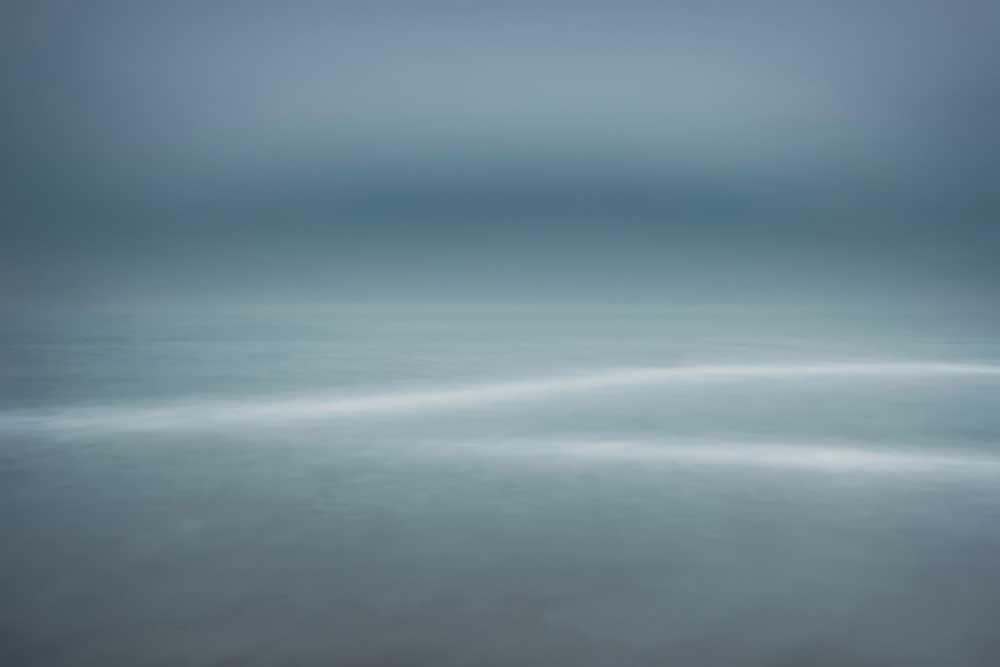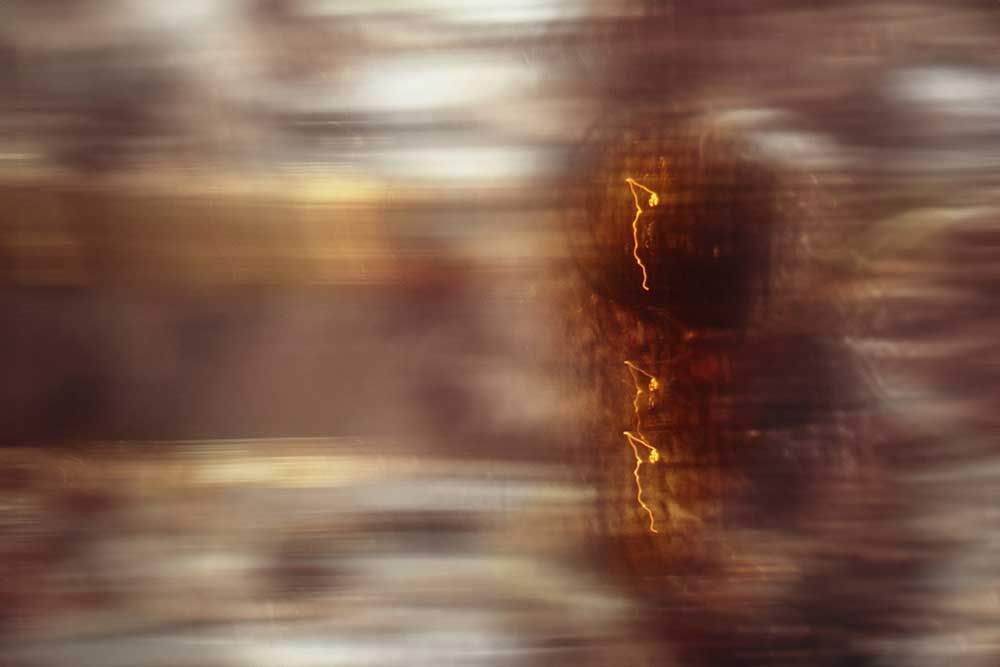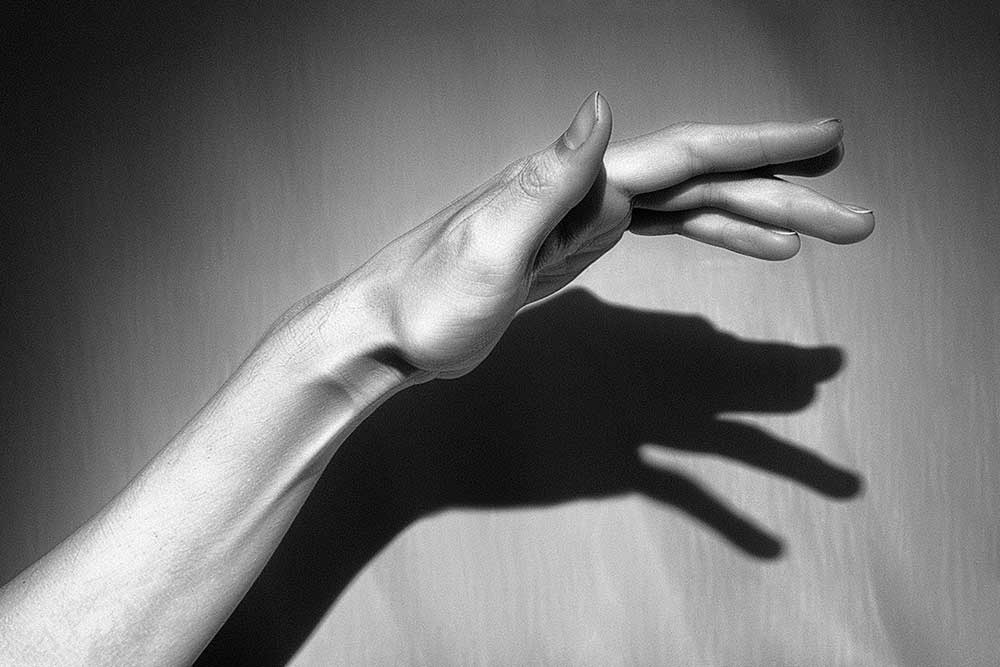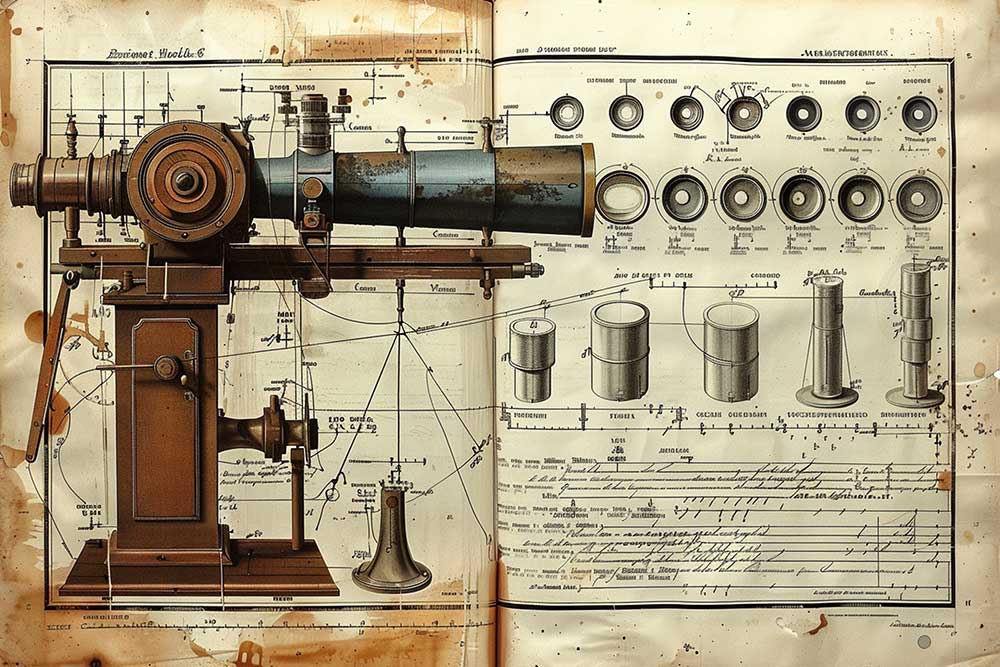I will never know if are the things that are looking for you and make sure that you find them, or it is you that are looking for them (sometimes without knowing it) and they let themselves be found…. this is what I felt when, last spring in Madrid, during PhotoEspaña 2023, I went to see the exhibitions of Luis Stettner and Anastasia Samaoylova, housed in the Fundación Mapfre.
Stettner’s retrospective brought me closer to the photography of this author who mixes a “street” style with a humanism that enhances the beauty of everyday life. Image Cities by Anastasia Samoylova was a surprising immersion in visual collages in which photography in turn integrated (advertising) photography in different metropolitan contexts. With my soul full of the sensations provoked in me by these two exhibitions, I decided to enter the library of the exhibition space, with the idea of wanting to transform the vortex I felt inside me into something tangible. I headed to the photo book section and one, with an anonymous spine but a little more protruding than the rest, caught my attention. It was “A Story of Light” by Jan Nemec.
I had already read Czech authors: Milan Kundera in full, but also Bohumil Hrabal and Ivan Klíma and they all always brought so many positive things to my existential baggage and my ability to see the invisible. Driven by my past experiences, I decided to read the summary on the back cover and there I found words that I couldn’t resist: light, photographer, invisible image, bohemian life, rural world, love, death… they convinced me to buy it as “holidays” book. It was love at first sight that I will never forget.
The book tells the fascinating story (between fiction and reality) of a Czech photographer who really existed in the first half of the 20th century, called František Drtikol who was one of the great names in photography of the time. The book tells the story of this person who lived in Pribram, a mining village and who as a child was a direct witness to an immense tragedy that took place in the silver mine of his town. A misunderstood boy in the “littleness” of that place, thanks to his exceptional “ability to see” he was admitted to the Munich photography school and from there he made an exponential leap as a photographer of both artistic nudes and landscapes, allowing himself to open an important and profitable photography studio in the center of Prague. Great expert of the aesthetics of the feminine but not very skilled in understanding female psychology.

As a visual artist, what I liked most of all in Jan Nemec’s story was the author’s ability to describe Drtikol’s craftsmanship in working with light, in capturing “his mood”, in recognizing his bright calligraphy, to (as Nemec says) transform the camera lens (objective) into “subjective”. This mastery with light turned into obsession and became the cause of an internal rupture between his desire for beauty and the dissatisfaction with reality which led him, in the last phase of his life, to mysticism and Buddhism.
The Light. Throughout history, human beings have wondered about the physical phenomena that have to do with light. Light has been an object of human curiosity and veneration since ancient times. In the past, it was thought that light was something that emanated from the eye, the object, or both. Only at the beginning of the year 1000, the scientist Al-Hazen separated light from the sense of sight. Albert Einstein demonstrated that light has quantum behavior, both a wave and a particle. The main property of light used in photography is diffraction, which consists of the ability of a light beam to bend in new directions when it passes through a narrow opening. The light uses the narrow opening as a new wave emitter. The resulting effect is a beam of light that appears to “open up.”. [Source]
Back to Drtikol, main protagonist of the book of Nemec. I would highlight the pages in which the teenage Frantisek was apprenticed to the town photographer in his artisan workshop in which the plates were still washed with potassium and diluted sodium. Since he was little, Drtikol had an artistic predisposition that he channeled into drawing and it was precisely his drawing that allowed him to enter the newly created Munich Photography Academy, in which he stood out for his application and his ability to use light and for the ability to see in a “different way”. As explained in the book, the ability to see is based on the photographer’s ability to interpenetrate what he sees and the ability to adorn it with imagination.
The pages of the book dedicated to the student stage in Munich are full of unmissable practical and philosophical teachings on photography.
Upon completion of the academy, Drtikol opened a studio in the center of Prague that he would keep open despite the ups and downs of history for the next 40 years, above wars, foreign occupations, national, racial and political revolts and in which he, as the years passed, took refuge to defend himself from the external emptiness.
His modernist and light-focused photography still retains an extraordinary magnetism that seduces the viewer. Nemec portrays Drtikol as a tormented, sensitive but complex soul, full of light which reveals itself above all as a contrast to the deep shadow areas that accompany it.

Below I leave just a few quotes transcribed from Nemec’s book to provide a simple taste of what can be found in the book and what the book offers for deep personal reflections on the meaning of art and photography.
“Photography is no other thing than a fascinating manifestation of what happen when the light comes into the hand of the man; in this case, under the light we held the time”
“The first thing is to look at things slowly; perceive its nature with the senses. Then this perception must be adorned with the imagination and finally let these things merge with us. The latter is not easy at all: you have to make room for it, put your own thoughts aside to identify yourself with it”
“The essential thing in the creative process is the intention and the intention of the true creator can manifest itself in an infinite number of ways depending on the means used”
“We must find the truth of man in his countless superficial speeches. People are naked; the truth of a particular man is simpler and clearer than the attempts he makes to twist and deny”
“The external light of the photography that you have accumulated in your life shines in the interior landscapes and the internal light magically impresses the plates”

Photosatriani
I am a curious of life with idealistic tendencies and a fighter. I believe that shadows are the necessary contrast to enhance the light. I am a lover of nature, of silence and of the inner beauty. The history of my visual creations is quite silent publicly but very rich personally, illuminated by a series of satisfactions and recognitions, such as: gold and silver winner in MUSE Awards 2023; Commended and Highly Commended in IGPOTY 2022/19/18, honorable mention in Pollux Award 2019; selected for Descubrimientos PhotoEspaña (2014), Photosaloon in Torino Fotografia (1995) and in VIPHOTO (2014). Winner of Fotonostrum AI Visual Awards 2024. Group exhibitions in: Atlántica Colectivas FotoNoviembre 2015/13; selected for the Popular Participation section GetxoPhoto 2022/20/15. Exhibitions in ”PhotoVernissage (San Petersburgo, 2012); DeARTE 2012/13 (Medinaceli); Taverna de los Mundos (Bilbao); selected works in ArtDoc, Dodho, 1X. A set of my images belongs to the funds of Tecnalia company in Bilbao, to the collection of the "Isla de Tenerife" Photography Center and to the Medicos sin Fronteras collection in Madrid. Collaborator and interviewer for Dodho platform and in Sineresi magazine [Website]







